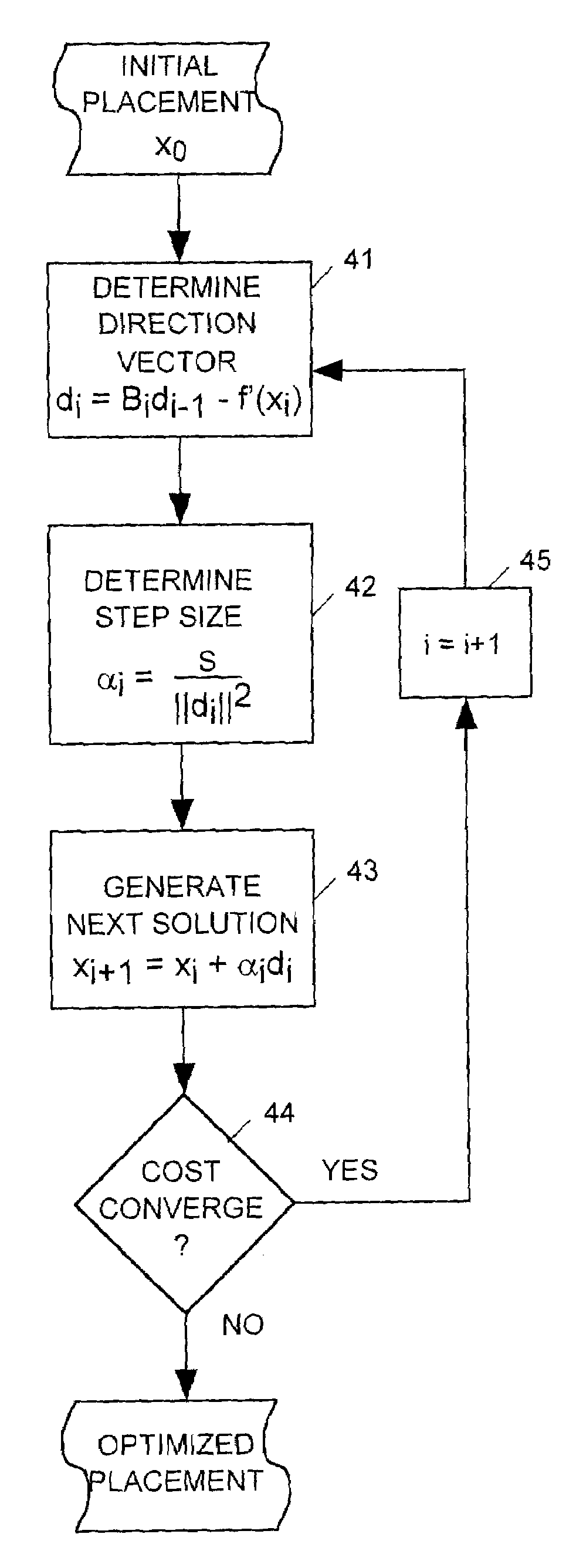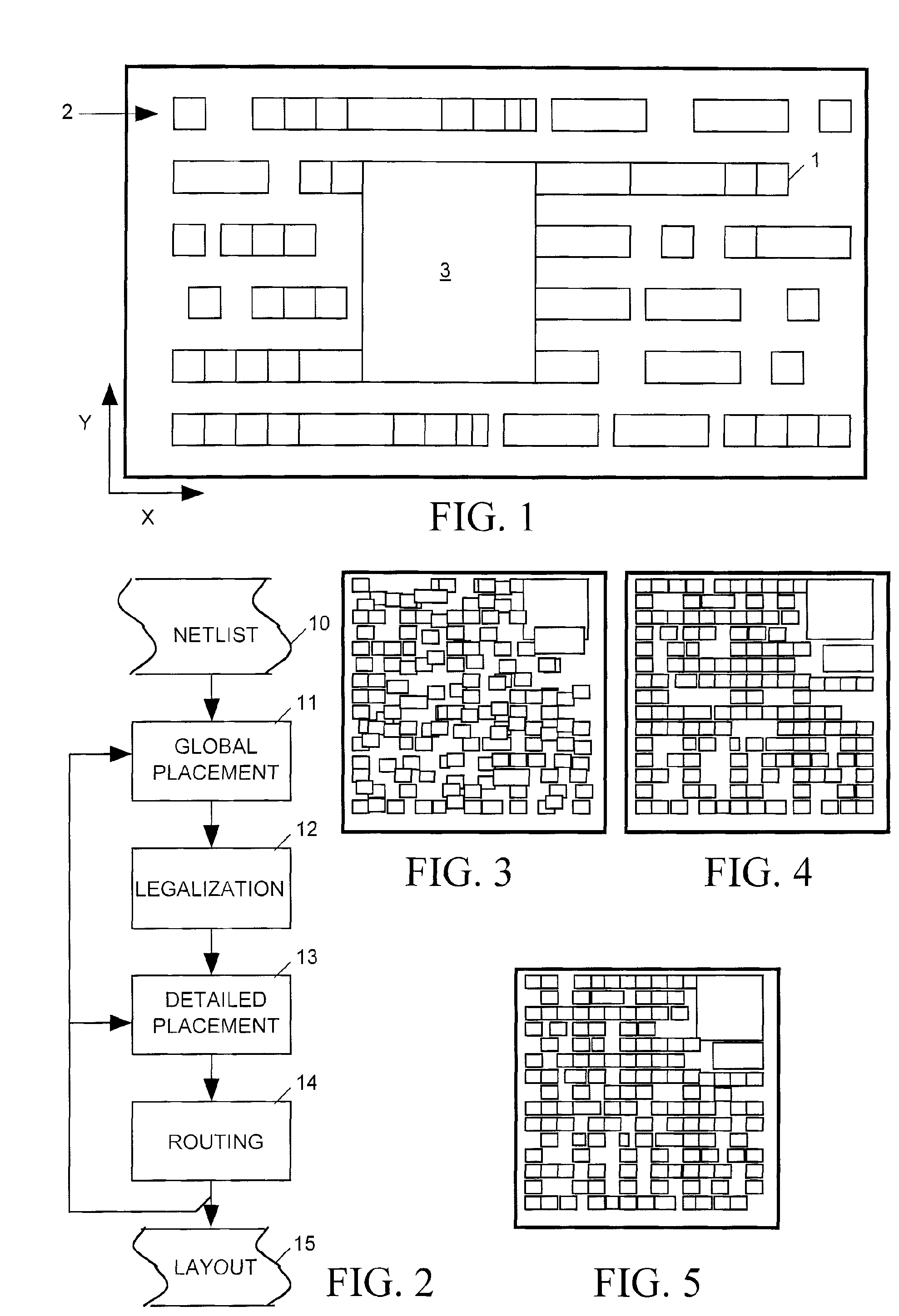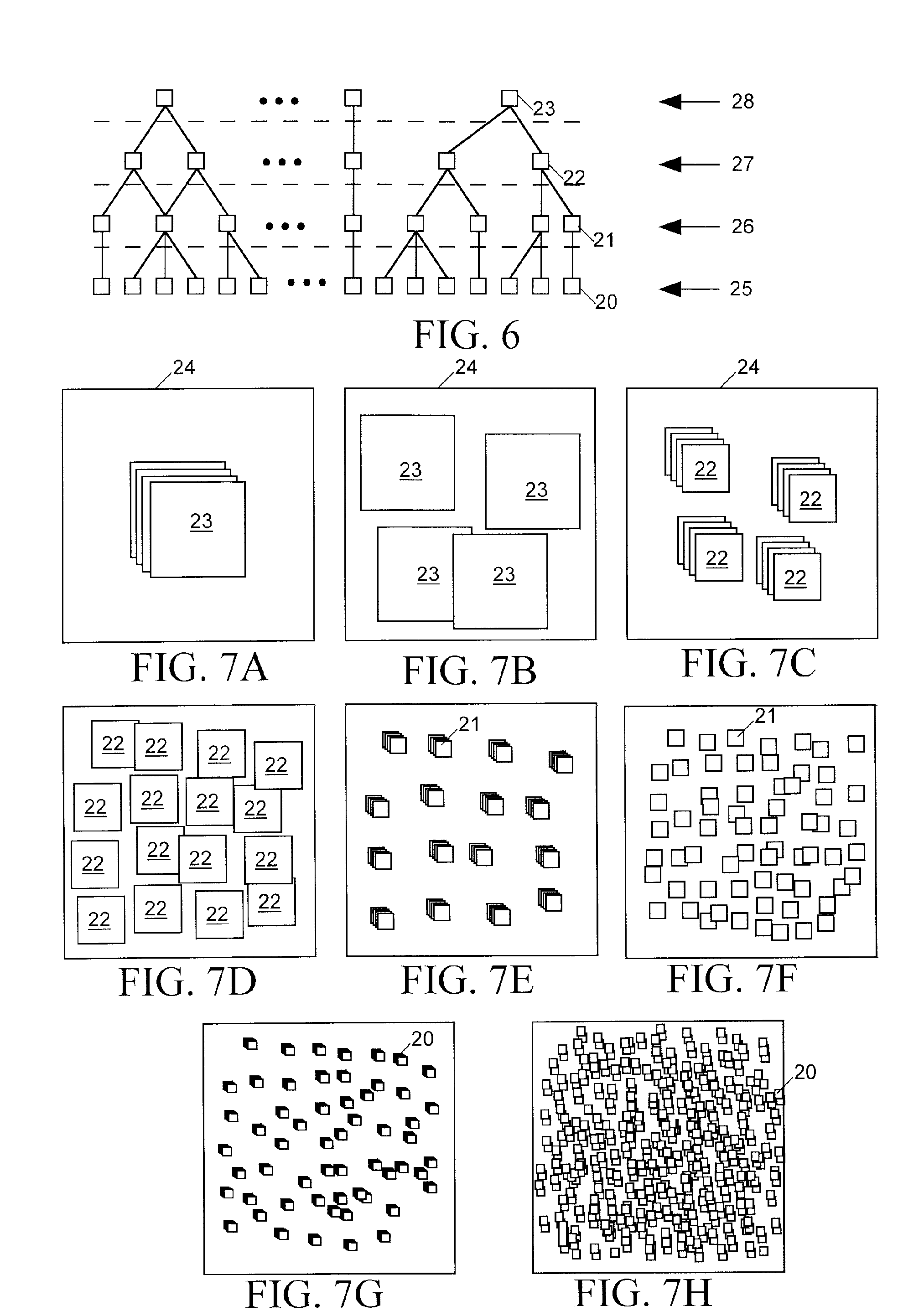Analytical global placement for an integrated circuit
a global placement and integrated circuit technology, applied in the field of analytical global placement algorithms, can solve the problems of excessive routing congestion in any region, increased wire length, and difficult routing, and achieve the effects of improving the routability of the global placement plan, and improving the routability
- Summary
- Abstract
- Description
- Claims
- Application Information
AI Technical Summary
Benefits of technology
Problems solved by technology
Method used
Image
Examples
Embodiment Construction
[0030]The invention relates to a method for generating a global placement plan specifying approximate positions of cell instances within an integrated circuit (IC) to be fabricated. The method is suitably implemented by a conventional computer executing software residing on computer-readable media such as, for example, a hard disk, a compact disk, or read only or random access memory, which when read and executed by a conventional computer, causes the computer to carry out the method.
[0031]A netlist describes an IC as a set of cell instances having terminals interconnected by conductive networks (“nets”). A placement and routing (P&R) tool converts a netlist into an IC layout, a data file indicating a position within the IC of each cell instance and describing the physical arrangements of the conductors forming the nets. As illustrated in FIG. 1, cell instances 1 implementing small devices, such as transistors and logic gates, are of standard height in the y direction of the x-y pla...
PUM
 Login to View More
Login to View More Abstract
Description
Claims
Application Information
 Login to View More
Login to View More - R&D
- Intellectual Property
- Life Sciences
- Materials
- Tech Scout
- Unparalleled Data Quality
- Higher Quality Content
- 60% Fewer Hallucinations
Browse by: Latest US Patents, China's latest patents, Technical Efficacy Thesaurus, Application Domain, Technology Topic, Popular Technical Reports.
© 2025 PatSnap. All rights reserved.Legal|Privacy policy|Modern Slavery Act Transparency Statement|Sitemap|About US| Contact US: help@patsnap.com



